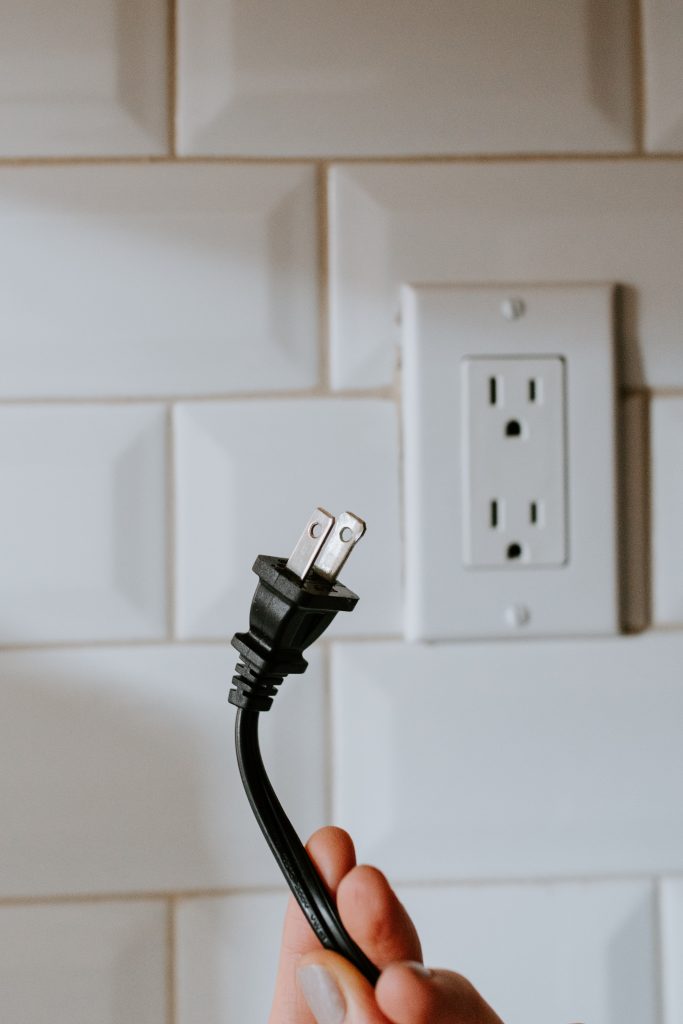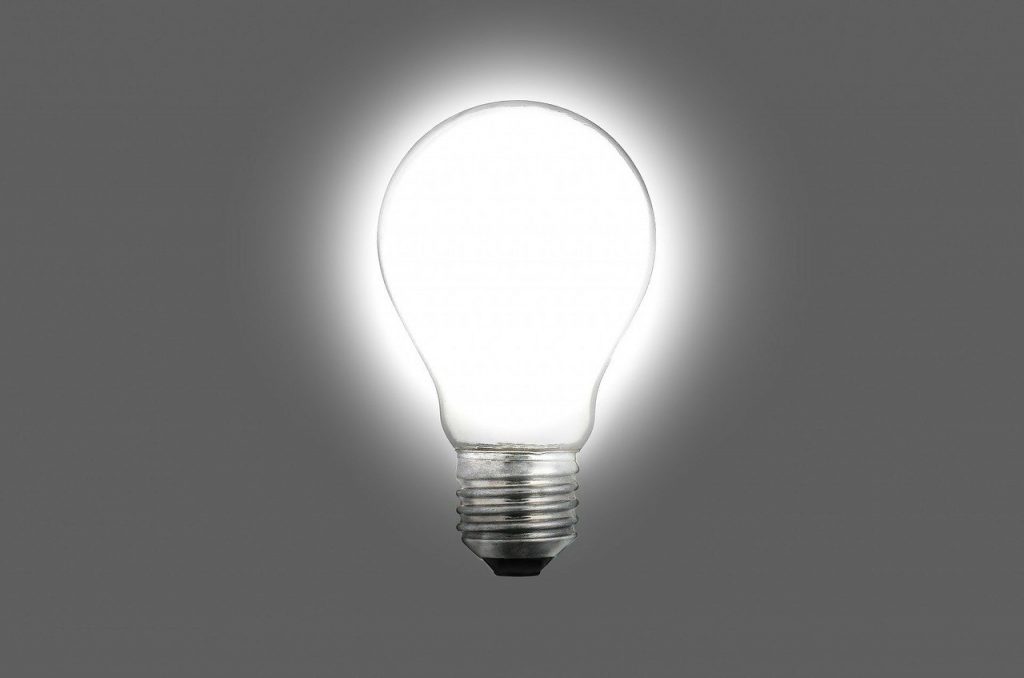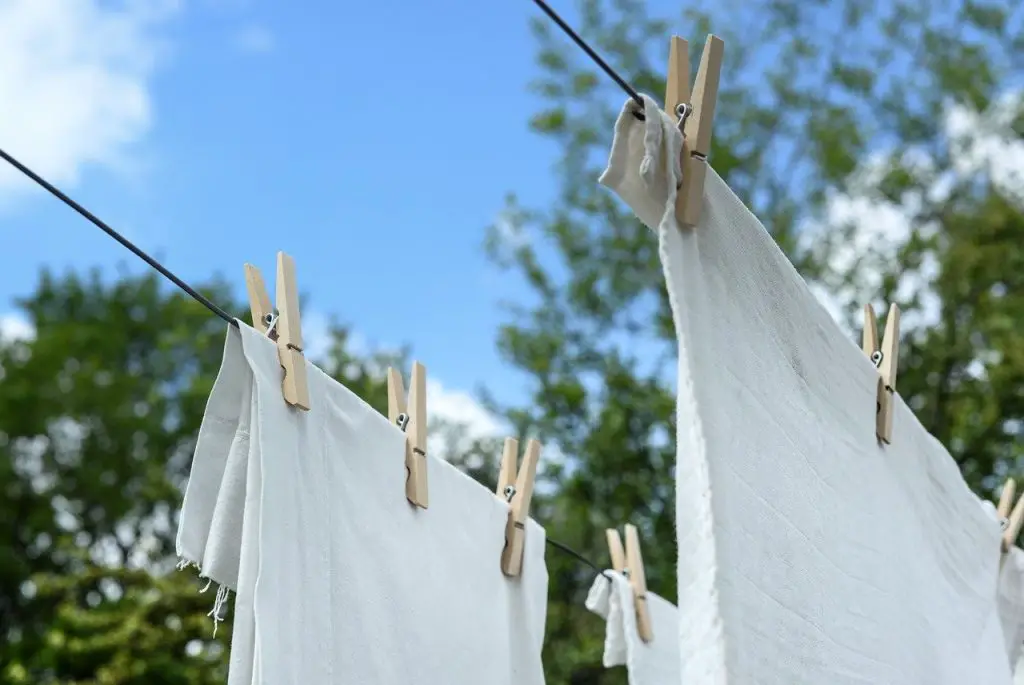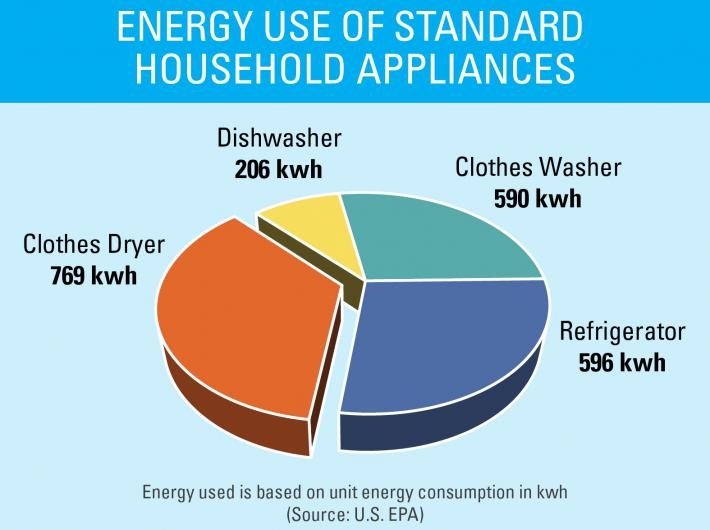Disclosure: this post contains affiliate links, which means I may receive a commission if you click a link and purchase something at no extra cost to you. Please check out our policies page for more details.
I don’t know about you, but we’re in south Texas and our summers get HOT. And because it gets so hot, we run our air conditioning like crazy in the summer.
Our electric bill has gotten out of hand in the past, and we desperately looked for ways to cut our electric bill.
Below are ways to cut your electric bill. Some are pretty drastic and some are very simple fixes!
Table of Contents
How can I cut my electric bill?
Unplug

Appliances around the house could be using as much as 10% of your total monthly energy on what’s called “phantom energy”. It’s basically the energy required to quickly turn on your TV, provides wireless even when you’re not using it, or your cable box that stays on so you can quickly access it.
Phantom energy makes things more convenient, but it does hog some of your electric and increases your monthly bill.
If possible, unplug whatever you are not using. Or even easier, plug things into power strips that you can simply unplug one source. Do a test run over a month or two to see how much it could save you!
Switch to LED

According to energy.gov, LED bulbs use 75% less energy and last 25 times longer than incandescent light bulbs.
So, not only do LED lightbulbs save you money on your electric bill, but it also saves you money on bulbs overall! Win win!
Do a home energy audit
You could end up saving anywhere from 5% to 30% on your monthly energy bill just by doing a home energy audit and fixing what needs it!
The cost range varies, but it could be $100-500 for a professional to come in for a home energy audit. Some professionals offer a discount on the audit if you also hire them to do the fixes.
But if you want to save some cash, there are plenty of guides out there to conduct your own home energy audit.
Use dimmer switches for your lights
Older styles of dimmable lights used the same amount of energy, regardless of how much light they put out. Modern-day dimmable lights only use the amount of energy they put out, giving you some money-saving potential.
Here’s a great option for your dimmable light switch.
Check out this article for more info on how dimmer switches use less energy (if you’re a nerd like me and like to learn about that stuff).
Dry your laundry outside

Even if you only have a couple of months of good weather to hang dry clothes where you live, you should still give this a try.

Depending on how much you use your dryer, you could be saving yourself anywhere from $20-200 per year in electric costs. If you’ve got kids, you’re probably looking at the higher amount with all the laundry you have to do!
We don’t have a ton of space in our backyard, so we ended up buying this retractable clothesline that takes up no space at all when not in use. When you need it, it has two lines that extend up to 49 feet.
And, if you’re still wanting to use a clothesline but have poor weather that day, we also bought this indoor retractable clothesline that works perfectly in our laundry room (or you could install it in a bathroom!).
Ceiling fans
Ceiling fans use very little energy when compared with the air conditioner. If you’re able to raise the thermostat even a few degrees in the warmer months, it would be worth the cost of installing a ceiling fan for the cost savings on your electric bill!
There are a few caveats though. If you’re still keeping the thermostat as low as you would have if you didn’t have a fan, skip it. Also, don’t have fans running in rooms that you’re not in, since it doesn’t help you much to run it in the bedroom while you’re hanging out in the living room.
According to the Department of Energy, you can raise the temperature on your thermostat by about 4 degrees while using a fan.
Keep up with your HVAC filters
It’s pretty clear that your HVAC system has to work harder if the filters have dirt and other debris caked on. But do you know how much harder it has to work?
The Department of Energy states that keeping a clean filter can reduce energy consumption by as much as 15%. That’s a pretty big deal!
To make it as easy as possible, buy your filters in bulk so you always have one handy. Also, set a reminder on your phone or calendar to at least check your filter every couple of months. We also like to write the date on the filter that we changed the filter, just in case.
Only wash full loads of laundry
This is especially helpful if your washing machine doesn’t have an auto-sensing function to see how large your load is (and thereby adjusting the amount of water).
Your washer will be using very close to the same amount of energy, no matter the size of the load, even if there is an auto-sensing function.
So, make the most out of each use and “load” (see what I did there?) your washer up!
Use insulated curtains
In most circumstances, you’ll be saving on your energy costs if you use insulated curtains in the house.
What cases will you save on electricity? If you have a drafty house, they could bring down the cost of electricity. Or if you have single-pane windows, closing the curtains will help keep heat in, or the heat out in the summer for those windows getting direct sun.
Where might curtains not help? Depending on how cold it gets in your neck of the woods, it might be more beneficial to let the sunlight come through to help heat the house.
These insulated blackout curtains could help you save quite a bit on your electric costs when used properly!
Programmable thermostat
The idea behind a smart, programmable thermostat is that you can program in temperature settings based on the time of day and what you’ll need.
For example, there’s no need to use as much energy to heat or cool your house when you’re not there. So setting up a schedule, say Monday through Friday, 8am to 4pm, to automatically change the temperature plus or minus 10 degrees could save you as much as 10% on your electric costs!
You could also set the thermostat to automatically kick on about an hour before you get home (or wake up in the morning), so you barely notice any difference and are still seeing savings!
Use dryer balls
Dryer balls are pretty amazing.
Not only do they reduce the drying time because they separate clothes and allow them to dry easier, but they also cut out the need for dryer sheets.
We use these dryer balls and LOVE THEM. They last through about 1,000 loads of laundry, or about 2-4 years (depending on how often you do laundry).
Try out motion sensors
Are you as guilty as I am about leaving lights on after you leave the room? Seriously, it happens all the time in my daughter’s room. Before you know it, the light has been on for way too long, and up goes your electric bill.
Motion sensor light switches are such an easy fix to that. It works with all types of bulbs and even has a programmable timer. So you could make the lights kick off anywhere between 1 minute and 30 minutes, after detecting no motion in the room.
Smart strip surge protectors
Did you know there’s something called “phantom energy” or “vampire energy”? Sounds spooky, but it’s actually just about the amount of energy things are using when they’re not actually in use.
Take your TV, for example. The reason it turns on so quickly is that it’s in constant standby mode, so you don’t have to wait for it to boot up. Because of that, it’s constantly using power.
In comes a smart strip to save the day!
And they’re actually pretty cool. Your basic smart strip detects a drop in energy and signals to cut off power completely to that outlet. Or, this smart surge protector has two rows: one for plugs that you always want on, and one row for smart detection.
There is also a version that only changes the power based on the control outlet.
What does that mean?
Say you have your TV in the control outlet, and your gaming system, DVD player, and surround sound in the smart outlets. In that case, the smart outlets will only change power based on what the control outlet is doing.
Cool items before loading in fridge
I’m so guilty of this: we’re cleaning up after dinner. We scoop up all the leftover food into a Tupperware dish and immediately throw it in the fridge.
Do you do this too?
If so, you might be wasting energy like us.
As it turns out, the heat from your leftovers is warming up your fridge, causing it to work to cool it back down.
If possible, let your food cool down before placing it in the fridge. Of course, you won’t be able to let it cool too much for fear of spoiling, but enough that there at least isn’t steam coming off your food anymore.
Weatherstripping
Here’s an easy, cheap way to lower your energy costs!
If you have any draft coming from your doors or windows, you could be losing quite a bit of money on your electric bill, as your heat/cooling systems are working to compensate.
Weatherstripping is a pretty inexpensive fix! This weatherstripping is as simple as a peel and stick, and you can choose the size you need based on what you’re working with.
Charge devices in the car
Another simple way to cut down on your electric bill is to charge your devices in your car, rather than in the house.
Now, this won’t work great if you’re not in your car often. But if you have a commute, run errands daily, or just like going out each day for something, this could be a good option.
Don’t have a plug in your car? No problem. This car power inverter plugs right into the cigarette lighter has two outlets and four USB ports.
Keep your doors open
And you’d think the opposite were true!
Closed doors inside the house actually obstruct airflow, and the HVAC system needs proper airflow to perform at its peak.
So what can you do?
The easiest fix is to leave your doors open for the best airflow. But of course, you want to close them at night while you’re sleeping.
There are a few options.
Leaving the opening at the bottom of your doors unobstructed is the easiest fix, but might not be enough. Another option is installing a transfer grill either in the door or above it to help with airflow. If you choose that route, it’d be best to hire an HVAC professional to do the installation.
Keep up with your home’s insulation
And not just in your walls. You’re also looking at the insulation in your attic, around doors and windows, and even your hot water heater.
Insulating your attic ensures that the heat you use to heat your home stays in your home. No need to heat the attic and beyond!
As far as insulating doors and windows, it’s important to make sure there is no draftiness coming from them by making sure everything is properly caulked and has good weatherstripping. If possible, changing out single pane windows for double pane will pay off in the long run.
And if you are able to insulate your water heater, especially in the colder months, and if your water heater is outdoors, you’ll reduce the amount of heating needed in the water tank.
Off-peak rates
If your electric company offers something called “time-of-use” (TOU) plans, then you will be able to take advantage of off-peak rates for energy use.
With a TOU plan, you are charged different rates based on the time of day and when the demand changes. Typically, there is more demand during the day and less starting in the evening into the night.
So if you’re able to take advantage of TOU plans with your electric company (and if you think you would be able to hold back on your electric use during peak times), this would be an awesome option to save money on electricity!
Shop around for your electric service
It’s good to stay current and know what the going rates are for certain services, and your electric service is no different.
If you’re in a contract with a particular company but it’s ending soon, start looking around to other companies to see if they offer better deals. Chances are, they do offer good introductory rates, and some even have a bonus included for signing on with them.
Check caulking around windows
This goes hand-in-hand with checking your insulation and making sure there are no drafts around your windows.
By doing a quick, simple test around each window, you can find the areas that need to be re-caulked. Follow this guide to do the test, and it also shows you how to properly seal up your window.
Do power-saving devices really work?
In short, YES!
Some of my favorites in this list are the motion sensors for light switches and the smart power strip.
Since my family constantly leaves on the lights in various rooms when no one’s in them, the motion sensors are a lifesaver and definitely save money. I know we’ve wasted tons of money by leaving those lights on.
And the smart power strip could save you anywhere from $10 to $30 every month, depending on what sort of appliances/equipment you are running. That means the power strip would pay for itself within a month!
How can I drastically cut my electric bill?
There are definitely a few options in this list that outperform others as far as the cost savings on your electric bill.
Here are a few ways you can drastically cut down on your monthly electric bill:
- Do a home energy audit – a good home energy audit can save you anywhere from 5-30% from your annual electric bill (according to energy.gov)
- Programmable thermostat – a programmable or smart programmable thermostat could save you anywhere from 10-20% annually
- Use a smart power strip – you can save up to 12% on your annual electric bill by eliminating phantom energy with a smart power strip
- Home insulation – it’s estimated you could save 15-20% by properly insulating your home, from the attic insulation down the walls, and the windows and doors around the house
Products mentioned in this post
That’s how to cut your electric bill!
Have you tried any of these methods to cut your electric bill down? What has been the most beneficial?
I’d love to hear from you in the comments!

